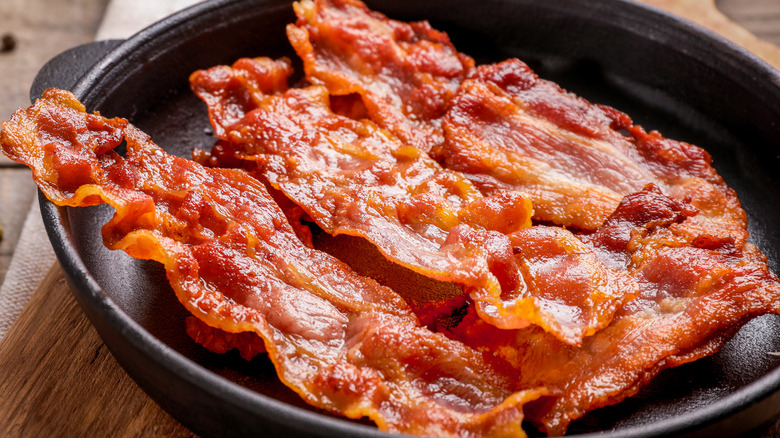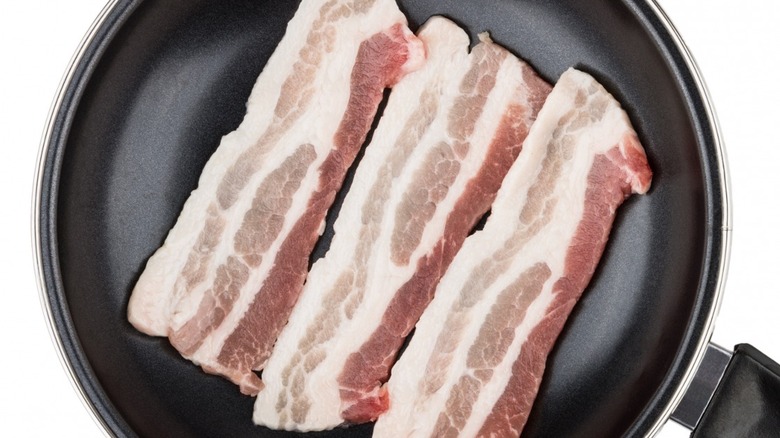An Easy Tip To Prevent Curled Bacon? Start It In A Cold Skillet
The sizzle, the aroma, and the unmistakably rich flavor of bacon make it a staple on many breakfast tables and a delightful addition to all sorts of dishes. Yet, a common grievance for bacon enthusiasts is the unwelcome curling of the slices as they cook. Curled bacon is not just an aesthetic issue; it can result in uneven cooking. While some parts get crispy, others remain undercooked, leading to a less-than-perfect bacon experience.
The reasons for this unfortunate twist of events are rooted in the disparity of temperatures and how bacon responds to them. But fret not, bacon aficionados, there's a simple, almost effortless trick that guarantees you'll cook the best bacon yet — start your bacon in a cold skillet.
We get it, starting your bacon in a hot skillet can seem like the intuitive choice. After all, we've been trained to think that sizzling-hot pans are the best way to get that perfect sear on our meats. However, bacon — with its unique fat-to-meat ratio — behaves a bit differently.
Why and how to start bacon in a cold skillet
The secret behind this simple hack is the gradual rendering of fat. When introduced to heat, the fat in the bacon begins to melt and render out, acting as a natural cooking agent. If the strip is tossed onto a hot skillet, the immediate and intense heat causes the fat to render out too quickly, leading to shrinkage and the inevitable curling.
However, by placing the bacon on a cold skillet and then heating it, you're allowing the fat to render out slowly and evenly. As the skillet heats up, the bacon fat melts uniformly, creating a self-lubricating environment. This not only prevents the bacon from sticking but also ensures that the entire strip cooks at an even pace, preserving the integrity of its shape and resulting in a consistently crispy texture.
To execute this method, place the bacon strips onto a cold skillet, ensuring they don't overlap. Start your stove on a low to medium setting to heat the pan gradually. As the pan heats, you'll see the bacon begin to sizzle and the fat start to render out. Let the bacon cook, turning occasionally, until it reaches your desired level of crispiness. Once ready, place the strips on a paper towel to drain any excess fat. Serve immediately and enjoy the difference. By embracing this cold skillet method, you'll not only solve the curly bacon dilemma but also unlock a whole new level of bacon deliciousness.

